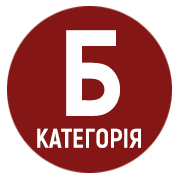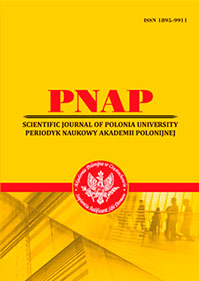ДИФЕРЕНЦІЙНІ ТА КЛАСИФІКАЦІЙНІ ОЗНАКИ МОВНОЇ КЛІШОВАНОЇ ОДИНИЦІ
Ключові слова:
кліше, мовна клішована одиниця, системність, номінативність, стереотипність
Анотація
Дослідження спрямоване на вивчення явища мовного кліше як визначної ознаки всіх рівнів мови, що постійно виникають на зламі різних підходів і наук. У статті зроблений аналіз мовних клішованих одиниць з метою виділення їхніх основних диференційних і класифікаційних ознак. До головних особливостей МКО належать лінгвокультурологічне, емотивне та оцінне значення, здатність до відтворюваності, системність, номінативність, стереотипність і ситуативна зумовленість. Саме вони виокремлюють МКО як самостійне явище в системі лінгвістичних понять сучасного мовознавства.
Посилання
1. Сосунова, Галина. “Функционирование и семантическая характеристика языковых клише во французском языке: (на материале таможенного дискурса).” Язык и культура. (2) 2014: 89-99.
2. Смирницкий, Александр. Лексикология английского языка. Тула: Омен, 1998.
3. Чумак, Людмила. “Нові” слова як особливість розвитку сучасної англійської мови.” Вісник Житомирського державного університету імені Івана Франка. 26 (2007): 229-231. eprints.zu.edu.ua/2274/1/06chlmam.pdf
4. Вишневська, Наталія. “Кліше як мовна одиниця: проблеми кліше в мовознавстві.” Філологічні науки. Наукові записки НДУ ім. М. Гоголя. Кн.3 (2013): 33-36.
5. Якубинский, Лев. Избранные работы: Язык и его функционирование. Отв. ред. А. Леонтьев. Москва: Наука, 1986.
6. Торопцев, Иван. Язык и речь. Воронеж: Изд-во Воронеж. ун-та, 1985.
7. Лещак, Светлана. Языковое клише: прагматика, семантика и структура аналитических номинативных неидиоматических знаков в современном русском языке. Kielce: Wyd. Akademii Świętokrzyskiej, 2007.
8. Серебрянська, Ірина. “Стилістичні особливості та культура ділової усної комунікації.” Вісник СумДУ. Серія “Філологіяˮ. (1) 2007: 166-172.
9. Степанова, Мария. “О “внешнейˮ и “внутреннейˮ валентности.” Иностранные языки в школе. (3) 1967: 13-19.
2. Смирницкий, Александр. Лексикология английского языка. Тула: Омен, 1998.
3. Чумак, Людмила. “Нові” слова як особливість розвитку сучасної англійської мови.” Вісник Житомирського державного університету імені Івана Франка. 26 (2007): 229-231. eprints.zu.edu.ua/2274/1/06chlmam.pdf
4. Вишневська, Наталія. “Кліше як мовна одиниця: проблеми кліше в мовознавстві.” Філологічні науки. Наукові записки НДУ ім. М. Гоголя. Кн.3 (2013): 33-36.
5. Якубинский, Лев. Избранные работы: Язык и его функционирование. Отв. ред. А. Леонтьев. Москва: Наука, 1986.
6. Торопцев, Иван. Язык и речь. Воронеж: Изд-во Воронеж. ун-та, 1985.
7. Лещак, Светлана. Языковое клише: прагматика, семантика и структура аналитических номинативных неидиоматических знаков в современном русском языке. Kielce: Wyd. Akademii Świętokrzyskiej, 2007.
8. Серебрянська, Ірина. “Стилістичні особливості та культура ділової усної комунікації.” Вісник СумДУ. Серія “Філологіяˮ. (1) 2007: 166-172.
9. Степанова, Мария. “О “внешнейˮ и “внутреннейˮ валентности.” Иностранные языки в школе. (3) 1967: 13-19.
Опубліковано
2017-06-20
Як цитувати
Романюк, Н. М. (2017). ДИФЕРЕНЦІЙНІ ТА КЛАСИФІКАЦІЙНІ ОЗНАКИ МОВНОЇ КЛІШОВАНОЇ ОДИНИЦІ. Мова. Література. Фольклор, (1), 178-183. вилучено із http://journalsofznu.zp.ua/index.php/philology/article/view/651
Розділ
Articles








